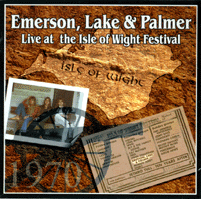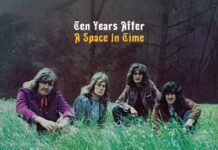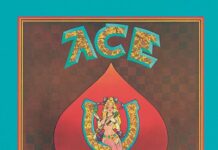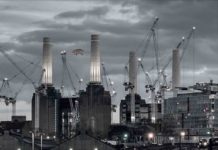The Isle of Wight Festival of 1970 has enjoyed a bit of resurgence lately thanks to the video release of a movie of the festival, with a soundtrack, plus individual performance releases by the Who, Jimi Hendrix, the Doors and Emerson, Lake and Palmer. For ELP, this disasterous event — the European Woodstock — was a watershed of sorts because it was only their second gig, and amidst all the chaos and gatecrashing ruckus, their appearance was considered top-notch.
If anything, the Isle of Wight Festival clearly signaled an end of the 60’s. It would be the last time the world would see Jimi Hendrix or Jim Morrison, both icons of a blossoming period abruptly shut down by the drama of Altamont. Bands like ELP and Jethro Tull would be part of a new wave — more progressive, less in touch with the earth and man, world issues, and much more immersed in the surreal, tranquil, cosmics and bizarre. The Message of Love was now the Message of ME — flagrantly displayed in the Isle of Wight movie that seems to center on an unruly crowd of thousands who want to get into the show, but don’t want to pay the admission, and the promoters dealing with it. During all the madness, one has to wonder how in the hell half a million people made it to this tiny island off the south coast of England in the first place.
For their performance, ELP’s brand of outrageousness seemed to shake the crowd out of their foul mood much more effectively than that of a whining Joni Mitchell, a frightened Kris Kristofferson or a Tiny Tim. From the potency of the instrumental “The Barbarian” (also the debut album opener, still unreleased at the time of this show) to the pacifying melody of “Take a Pebble,” ELP seemed to stir up the masses. Then they launched into “Pictures At A Exhibition,” the Mussorsky-composed opus that demonstrates how rock could embrace classical music, and sound bigger than the largest of orchestras. The piece climaxes with the blast of two stage-side cannons capping off the building tension hovering over the entire event.
Then it was on to more instrumentals with “Rondo” and “Nutrocker.” For years to come, Keith Emerson would establish a routine of letting loose during “Rondo” by assailing his beloved Hammond organ, stabbing and riding it like a bucking bronco. If no one can remember anything about ELP, they can surely say they were one of the most theatrical bands over the course of the three-day show. “Nutrocker” is actually a lift from Kim Fowley, who borrowed the licks from “The Nutcracker Suite,” another classical piece, and a favorite musical come Christmas time.
Overall, this CD exhibits an incredible amount of energy coming from the then newly-formed band. On listening to more recent live recordings of ELP, one can tell that in 1970, they were hungrier, hot shots ready to show how talented, inventive and astonishing they could be. For 8 more years, they proved just that.
The CD finishes up with comments from Emerson, Lake and Palmer themselves. Whereas some of the acts who appeared at the Isle of Wight might sooner put it behind them or not even live to tell about it, ELP recalls the event as a monumemtal moment in the history of the band. Over 25 years later, they are able to look back at the whole spectacle with a sincere fondness, and perhaps a bit of off-handed amusement as well.
LIVE AT THE ISLE OF WIGHT FESTIVAL is available on ELP’s own Manitcore records, exclusively through the ELP Web site.
Shawn Perry




















